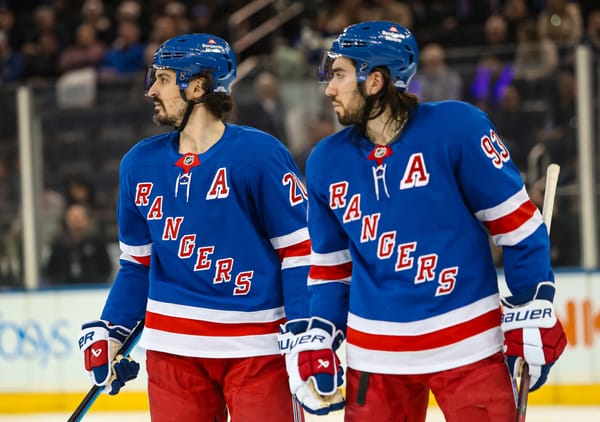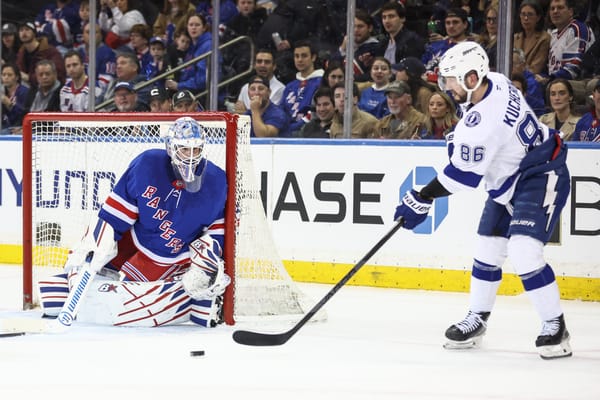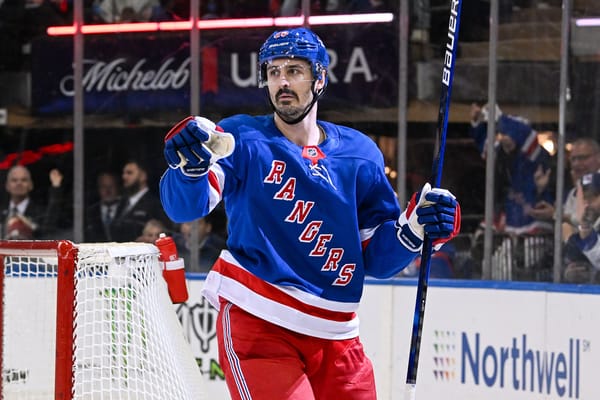Is The Rangers "Chemistry" A Myth?
Recently I talked to George about whether or not there were any stats to prove whether or not the Rangers so called fantastic "chemistry" is a myth or not. We agreed that there isn't really such a stat, unless you went deep into zone play and other statistical data that just isn't feasible.
So, let's use the eye test, and some statistics to decide whether or not the Rangers chemistry is a myth.
The opinion here is that the Rangers have terrible offensive chemistry. This is why I was in favor of a possible trade for Rick Nash-at the right price, of course-yet the idea that the Rangers have "great" offensive chemistry was the reason many supported keeping the team as is.
One can see on the ice the unsuccessful passes, the failure to find the open man, the inability to score on the power play, and the line switching, and see that as a lack of chemistry.
So much has been put into the line titles like the "GAS" line, the Whale line, etc, yet their offensive play has not been completely stellar, leading to changes having to be made.
So is the Rangers chemistry a myth? No. Join me after the jump for why not.
Before the jump I said the Rangers offensive chemistry is a myth. However, the Rangers defensive chemistry is the best in the league, in my opinion.
One can often see John Mitchell holding the top line players on the opposing teams against the boards while Brian Boyle tries to poke check the puck away. That's chemistry, while Brandon Prust fights off those trying to get to Boyle, or Ruslan Fedotenko does, or another Ranger does.
Ryan McDonagh and Daniel Girardi always seem to know which player should go down to block the shot, and which player should go after the top player on the opposing team. That's chemistry.
The reason there hasn't been as many line changes and overall team changes is that the Rangers defensive chemistry is unbelievable. Just ask Henrik Lundqvist.
Overall, the chemistry is not a myth. Offensively? Yes. Defensively? No.




